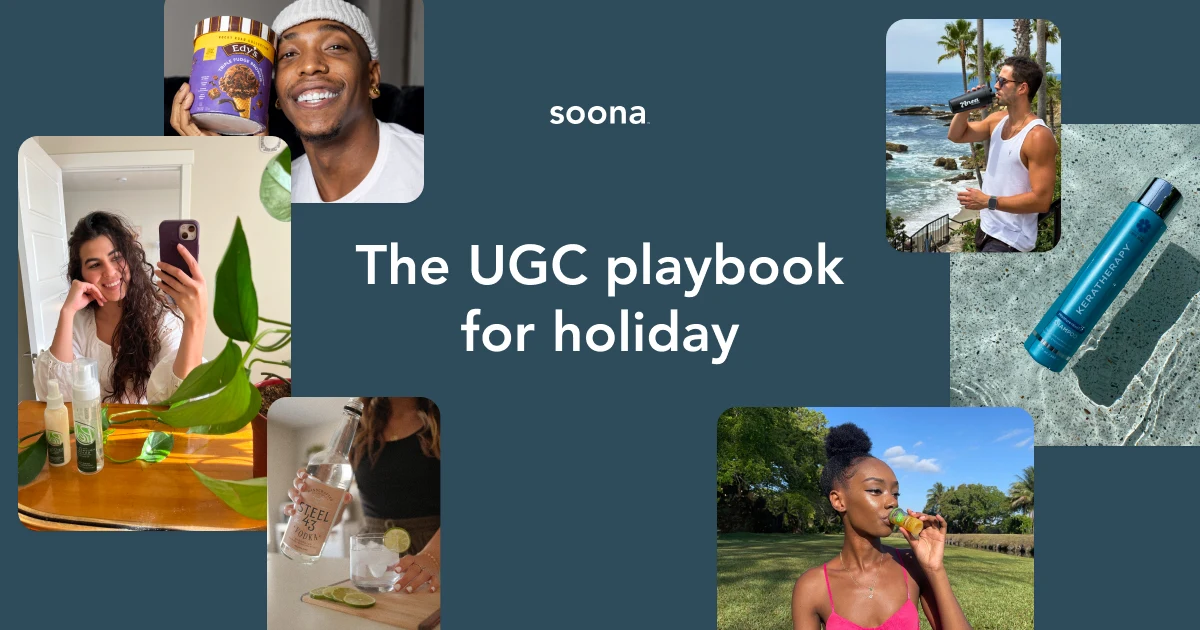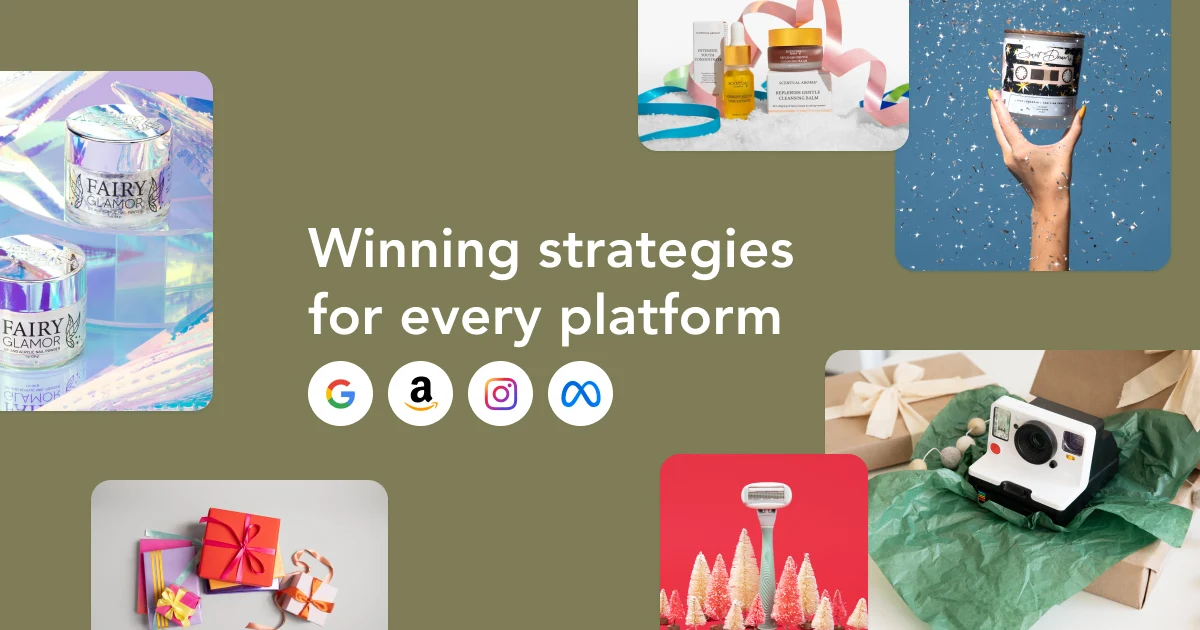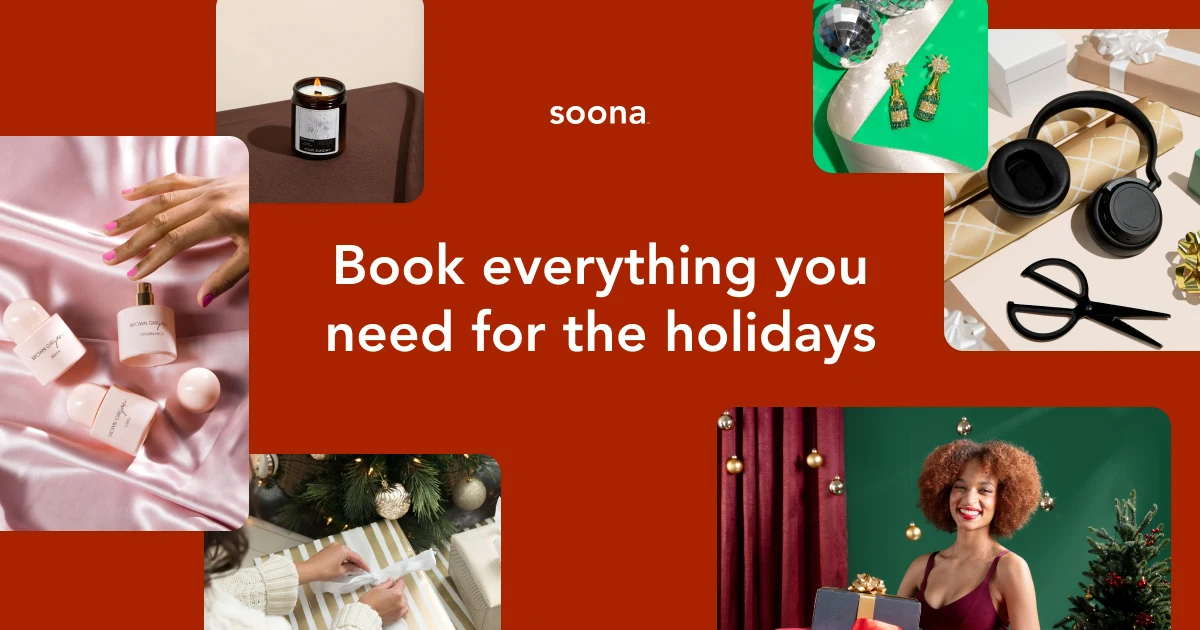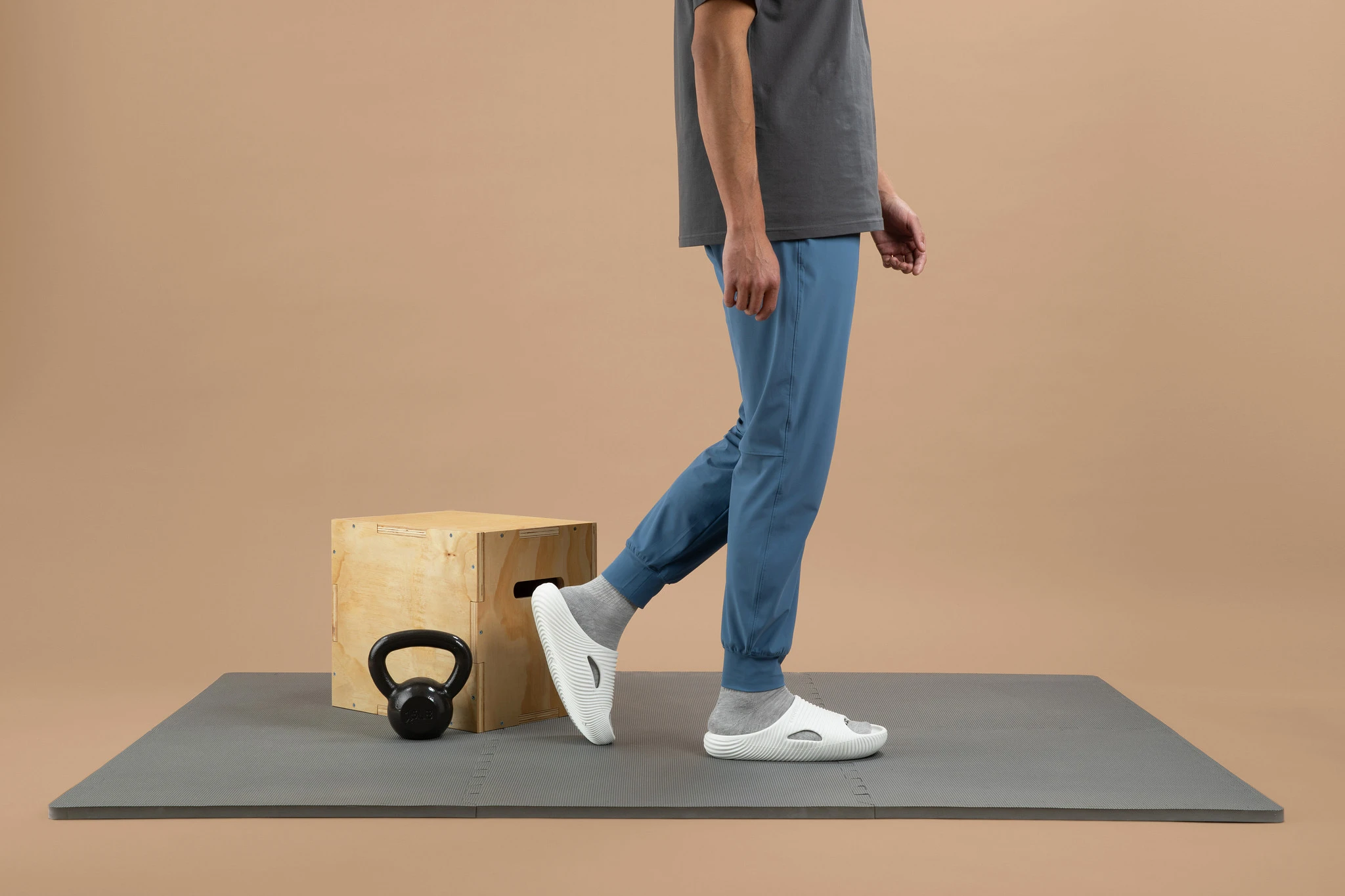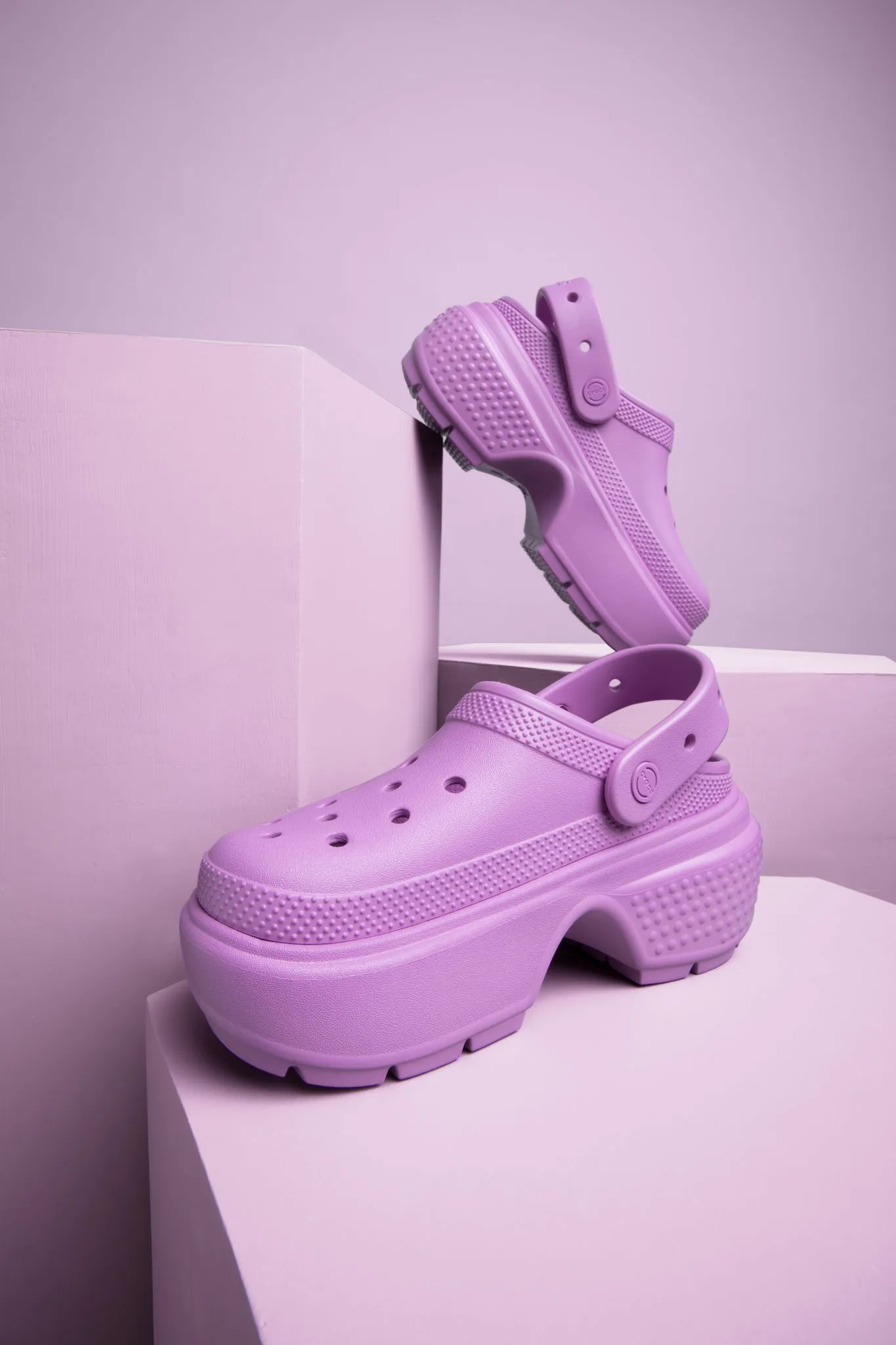The cosmetic industry’s rapid growth has made it highly challenging for new and smaller brands to break through. So it’s important to stand out if you want to make a mark.One way to do that? Compelling product content. We’re talking white background list shots, lifestyle images that show context, and ad graphics that stop scrollers in their tracks.
Here are some top cosmetics marketing strategy tips and ideas you can try on to make your beauty brand stand out in 2024.
1. Know your beauty brand
In today’s saturated beauty industry, setting yourself apart from the competition is crucial. The challenge lies not just in identifying your market niche, but also in getting your name out there and into the hands of your intended customers. That’s why it’s a good idea to develop your brand identity first, and shoot product photos after that’s established.

Without necessarily saying it, your brand should convey who you are, what you stand for, and what sets you apart from the competition. Your brand colors, logo, packaging, and other assets should all reflect these qualities. Once you’ve perfected your brand identity, you can move on to your beauty product photos.
2. Repurpose your beauty product photography
It’s important to make the most of your investment in product photography. This includes repurposing your visual assets for use on other channels and in different contexts. For example, you might use a white background photo and create a lifestyle composite set on a beach scene for a summer holiday promotion.
“There are so many different ways you can repurpose the content you create, even with just one static image,” says soona customer Noa Arias, CEO and co-founder of Bloom Intimates. “We rework our static images and create some type of short-form video. You can also change the background color. You can create a GIF. The opportunities are endless!”
Visually dominant platforms like Instagram, TikTok, and YouTube are powerful avenues for generating buzz for your products and business—and perfect places to boost the ROI of your beauty product shots.

There are two main approaches to social media: paid social advertising and organic social media marketing. Getting people to follow you on social media without paying for social ads can be hard and take a long time. In many ways, organic social is a road that never ends, but it’s a road worth walking. Stick to a daily posting schedule, try out different kinds of beauty photos to see what works best, and post more of that.
3. Add video content to your marketing mix
Video is one of the most effective marketing tools for cosmetics and beauty brands, and its popularity is only growing. You can use video to showcase your beauty products and their texture, color, application, and more.
Videos are popular among newbies and makeup experts because they’re easy to understand and fun to watch. This type of content is especially effective in sectors where the product being promoted is visually appealing. We recommend uploading before-and-after video transformations, shade swatches, and how-to guides for your items.
Check it out: Make it happen with Magic Script AI, free personalized video scripts to help move you out of writer's block and into making video magic 🪄 >
4. Partner with beauty influencers
The beauty sector is super tapped into the influencer community. On one hand, customers connect best with real people who can relate to the problems they face every day. At the same time, you want to use influencer marketing without spending a lot of money on famous influencers and celebrities. That’s where micro-influencers come in.
Micro-influencers have relatively small audiences, but typically generate a greater return on investment than those with massive audiences. Despite having a smaller audience, they have a tighter relationship and more influence over their audience.
This means the people in their community will consider any proposal they make as an endorsement. In addition, micro-influencers frequently provide giveaways for their followers, which is a win-win for both the influencer and the brand’s exposure.

Plus, micro-influencers are typically less demanding with their asks and contractual negotiations than celebrities and big-name influencers. You can coach them into what types of photos and content you’re after. Always source micro-influencers who already have a similar visual aesthetic to the one you’re looking for. It’s easier to play to their strengths than to ask them to do something outside of their wheelhouse.
Beauty product shots need a makeover? Build a custom shoot today >
5. Build a community for UGC
Online communities are a fantastic resource for cosmetics companies looking to boost customer loyalty and participation. Members can talk about what they like, get recommendations on what to buy, and offer suggestions for accomplishing those goals. Additionally, communities give a venue for brand representatives to interact with your prospective customer profiles. When issues arise, they can be addressed and concerns answered.
So what does this all have to do with product photos? The answer is user-generated content, or UGC. You can create a community that encourages sharing of multimedia content, including product photos. And while the customer photos may not make the main image spot on your product page, they’re extremely effective in marketing via other channels like social media or email.
Check it out: 10 best UGC platforms >
For instance, Glossier’s use of its online community has yielded enormous success. Even though it has more than three million followers across its social media platforms, it regularly engages in meaningful dialogues with customers via social media. This encompasses everything from answering simple product-related questions to soliciting suggestions for future items. The outcome is a significant client base of brand-loyal individuals who adore Glossier’s cosmetic products and are vocal about them.
Include testimonials in your product pages
Happy customers are, without a doubt, the best way to get new business. And testimonials are one of the most important things a customer looks at when making a decision. Give your customers all the information and useful links they need about your product to cut down on their research time.
Did someone give one of your products a good review? Great! Put a link in the description of the product and watch the magic happen. Video testimonials for your cosmetics line that feature actual customers demonstrating how they use the products and praising the ones they like best are a terrific way to spread the word.
6. Prep beauty photos for search
Consumers use Google throughout the purchase process. Mastering search engine optimization (SEO) is essential if you want to be discovered at pivotal times. And your product images play an important role in that.

When it comes to optimizing your product photos for search, make sure they’re small in file size, saved for web use, and contain descriptive alt text for accessibility and findability. You might also consider using your target keyword in the image file name.
7. Be authentic and inclusive
Your credibility rests on the quality of your products. The best way to market your company, and products, is to do it naturally without using a lot of “layering masks” to make the product look more valuable. It’s also important to keep up with current events and work toward making the world a better place.
Incorporating messages about diversity and inclusion into your marketing strategy is crucial. Topics, including body type, skin tone, gender identity, and more, have been heavily discussed in recent years, highlighting the importance of an inclusive approach to the beauty industry.

Fenty Beauty by Rihanna is a good example of an inclusive brand. The company successfully represents diversity in both its target demographic and the models it uses to promote its goods.
Important! Get the 411 on creating accessible videos and best practices for video accessibility >
8. Optimize your listings
It’s always a good idea to check in on the performance of your product pages and assets. The beauty of selling online is you can change things in an instant—and then change it back if it doesn’t work.
Analyze performance by checking site and ad campaign performance. Run A/B tests to see which types of imagery engage more users. You can also see which content types perform beest, photos vs. videos vs. ad graphics, for instance.
This is all easier with soona’s Listing Insights tool. It gives you targeted creative recommendations to improve your product listings performance.
9. Get into blogging
Blogging is a great way to boost SEO because it adds content to your site, as well as the opportunity to generate internal linking strategies. Not interested in starting a blog yourself? Send your products to beauty bloggers to feature on their own!
10. Hire a professional for product images
The fierce competition in today’s cosmetics and beauty business means that simply having outstanding products isn’t enough. You need to put in a lot of effort to differentiate and get your audience interested in your brand.

Brands of all sizes have tons of tools available to help them carve out a spot in the beauty niche—and that includes cameras. It’s easier than ever before to DIY product photos, and we’re willing to bet this is a route many of your bootstrapping competitors are taking. Hiring a professional beauty photographer or studio can be all the difference you need to capture shots that really stand out and elevate your brand above the rest.
soona offers beauty brands a virtual production platform to create dream content. Our beauty product photography allows you to create images and videos that grab your shoppers’ attention.
Shine the light on your beauty products with soona
Every beauty product has a unique story—soona’s mission is to bring that story to life through photography. Whether you’re a cosmetics brand, skincare company, or hair care business, our beauty photography services are tailored to your needs.
We don’t just create stunning images. We craft visual stories that resonate with your target audience, making your products irresistible. So no matter your goals, we can achieve them together.
{{studio-ad}}
Cosmetics marketing strategy FAQs
How do you market cosmetics?
You can market cosmetics through social media, email marketing, search engine optimization (SEO), influencer marketing, UGC campaigns, paid ads, and more. Effective cosmetics marketing is reliant upon high-quality product imagery and content.
What is the target market for cosmetics?
The target market for cosmetics can vary widely depending on the product type, price point, and brand positioning. It depends on your particular product offering.
How to market a makeup business?
You can market a makeup business through social media, email marketing, search engine optimization (SEO), influencer marketing, UGC campaigns, paid ads, and more. Effective cosmetics marketing is reliant upon high-quality product imagery and content.
What is marketing in the beauty industry?
Marketing in the beauty industry involves promoting and selling beauty products such as makeup, skincare, haircare, and fragrance. It involves market research, understanding your audience, and developing campaigns to appeal to that audience.
The cosmetic industry’s rapid growth has made it highly challenging for new and smaller brands to break through. So it’s important to stand out if you want to make a mark.One way to do that? Compelling product content. We’re talking white background list shots, lifestyle images that show context, and ad graphics that stop scrollers in their tracks.
Here are some top cosmetics marketing strategy tips and ideas you can try on to make your beauty brand stand out in 2024.
1. Know your beauty brand
In today’s saturated beauty industry, setting yourself apart from the competition is crucial. The challenge lies not just in identifying your market niche, but also in getting your name out there and into the hands of your intended customers. That’s why it’s a good idea to develop your brand identity first, and shoot product photos after that’s established.

Without necessarily saying it, your brand should convey who you are, what you stand for, and what sets you apart from the competition. Your brand colors, logo, packaging, and other assets should all reflect these qualities. Once you’ve perfected your brand identity, you can move on to your beauty product photos.
2. Repurpose your beauty product photography
It’s important to make the most of your investment in product photography. This includes repurposing your visual assets for use on other channels and in different contexts. For example, you might use a white background photo and create a lifestyle composite set on a beach scene for a summer holiday promotion.
“There are so many different ways you can repurpose the content you create, even with just one static image,” says soona customer Noa Arias, CEO and co-founder of Bloom Intimates. “We rework our static images and create some type of short-form video. You can also change the background color. You can create a GIF. The opportunities are endless!”
Visually dominant platforms like Instagram, TikTok, and YouTube are powerful avenues for generating buzz for your products and business—and perfect places to boost the ROI of your beauty product shots.

There are two main approaches to social media: paid social advertising and organic social media marketing. Getting people to follow you on social media without paying for social ads can be hard and take a long time. In many ways, organic social is a road that never ends, but it’s a road worth walking. Stick to a daily posting schedule, try out different kinds of beauty photos to see what works best, and post more of that.
3. Add video content to your marketing mix
Video is one of the most effective marketing tools for cosmetics and beauty brands, and its popularity is only growing. You can use video to showcase your beauty products and their texture, color, application, and more.
Videos are popular among newbies and makeup experts because they’re easy to understand and fun to watch. This type of content is especially effective in sectors where the product being promoted is visually appealing. We recommend uploading before-and-after video transformations, shade swatches, and how-to guides for your items.
Check it out: Make it happen with Magic Script AI, free personalized video scripts to help move you out of writer's block and into making video magic 🪄 >
4. Partner with beauty influencers
The beauty sector is super tapped into the influencer community. On one hand, customers connect best with real people who can relate to the problems they face every day. At the same time, you want to use influencer marketing without spending a lot of money on famous influencers and celebrities. That’s where micro-influencers come in.
Micro-influencers have relatively small audiences, but typically generate a greater return on investment than those with massive audiences. Despite having a smaller audience, they have a tighter relationship and more influence over their audience.
This means the people in their community will consider any proposal they make as an endorsement. In addition, micro-influencers frequently provide giveaways for their followers, which is a win-win for both the influencer and the brand’s exposure.

Plus, micro-influencers are typically less demanding with their asks and contractual negotiations than celebrities and big-name influencers. You can coach them into what types of photos and content you’re after. Always source micro-influencers who already have a similar visual aesthetic to the one you’re looking for. It’s easier to play to their strengths than to ask them to do something outside of their wheelhouse.
Beauty product shots need a makeover? Build a custom shoot today >
5. Build a community for UGC
Online communities are a fantastic resource for cosmetics companies looking to boost customer loyalty and participation. Members can talk about what they like, get recommendations on what to buy, and offer suggestions for accomplishing those goals. Additionally, communities give a venue for brand representatives to interact with your prospective customer profiles. When issues arise, they can be addressed and concerns answered.
So what does this all have to do with product photos? The answer is user-generated content, or UGC. You can create a community that encourages sharing of multimedia content, including product photos. And while the customer photos may not make the main image spot on your product page, they’re extremely effective in marketing via other channels like social media or email.
Check it out: 10 best UGC platforms >
For instance, Glossier’s use of its online community has yielded enormous success. Even though it has more than three million followers across its social media platforms, it regularly engages in meaningful dialogues with customers via social media. This encompasses everything from answering simple product-related questions to soliciting suggestions for future items. The outcome is a significant client base of brand-loyal individuals who adore Glossier’s cosmetic products and are vocal about them.
Include testimonials in your product pages
Happy customers are, without a doubt, the best way to get new business. And testimonials are one of the most important things a customer looks at when making a decision. Give your customers all the information and useful links they need about your product to cut down on their research time.
Did someone give one of your products a good review? Great! Put a link in the description of the product and watch the magic happen. Video testimonials for your cosmetics line that feature actual customers demonstrating how they use the products and praising the ones they like best are a terrific way to spread the word.
6. Prep beauty photos for search
Consumers use Google throughout the purchase process. Mastering search engine optimization (SEO) is essential if you want to be discovered at pivotal times. And your product images play an important role in that.

When it comes to optimizing your product photos for search, make sure they’re small in file size, saved for web use, and contain descriptive alt text for accessibility and findability. You might also consider using your target keyword in the image file name.
7. Be authentic and inclusive
Your credibility rests on the quality of your products. The best way to market your company, and products, is to do it naturally without using a lot of “layering masks” to make the product look more valuable. It’s also important to keep up with current events and work toward making the world a better place.
Incorporating messages about diversity and inclusion into your marketing strategy is crucial. Topics, including body type, skin tone, gender identity, and more, have been heavily discussed in recent years, highlighting the importance of an inclusive approach to the beauty industry.

Fenty Beauty by Rihanna is a good example of an inclusive brand. The company successfully represents diversity in both its target demographic and the models it uses to promote its goods.
Important! Get the 411 on creating accessible videos and best practices for video accessibility >
8. Optimize your listings
It’s always a good idea to check in on the performance of your product pages and assets. The beauty of selling online is you can change things in an instant—and then change it back if it doesn’t work.
Analyze performance by checking site and ad campaign performance. Run A/B tests to see which types of imagery engage more users. You can also see which content types perform beest, photos vs. videos vs. ad graphics, for instance.
This is all easier with soona’s Listing Insights tool. It gives you targeted creative recommendations to improve your product listings performance.
9. Get into blogging
Blogging is a great way to boost SEO because it adds content to your site, as well as the opportunity to generate internal linking strategies. Not interested in starting a blog yourself? Send your products to beauty bloggers to feature on their own!
10. Hire a professional for product images
The fierce competition in today’s cosmetics and beauty business means that simply having outstanding products isn’t enough. You need to put in a lot of effort to differentiate and get your audience interested in your brand.

Brands of all sizes have tons of tools available to help them carve out a spot in the beauty niche—and that includes cameras. It’s easier than ever before to DIY product photos, and we’re willing to bet this is a route many of your bootstrapping competitors are taking. Hiring a professional beauty photographer or studio can be all the difference you need to capture shots that really stand out and elevate your brand above the rest.
soona offers beauty brands a virtual production platform to create dream content. Our beauty product photography allows you to create images and videos that grab your shoppers’ attention.
Shine the light on your beauty products with soona
Every beauty product has a unique story—soona’s mission is to bring that story to life through photography. Whether you’re a cosmetics brand, skincare company, or hair care business, our beauty photography services are tailored to your needs.
We don’t just create stunning images. We craft visual stories that resonate with your target audience, making your products irresistible. So no matter your goals, we can achieve them together.
{{studio-ad}}
Cosmetics marketing strategy FAQs
How do you market cosmetics?
You can market cosmetics through social media, email marketing, search engine optimization (SEO), influencer marketing, UGC campaigns, paid ads, and more. Effective cosmetics marketing is reliant upon high-quality product imagery and content.
What is the target market for cosmetics?
The target market for cosmetics can vary widely depending on the product type, price point, and brand positioning. It depends on your particular product offering.
How to market a makeup business?
You can market a makeup business through social media, email marketing, search engine optimization (SEO), influencer marketing, UGC campaigns, paid ads, and more. Effective cosmetics marketing is reliant upon high-quality product imagery and content.
What is marketing in the beauty industry?
Marketing in the beauty industry involves promoting and selling beauty products such as makeup, skincare, haircare, and fragrance. It involves market research, understanding your audience, and developing campaigns to appeal to that audience.



